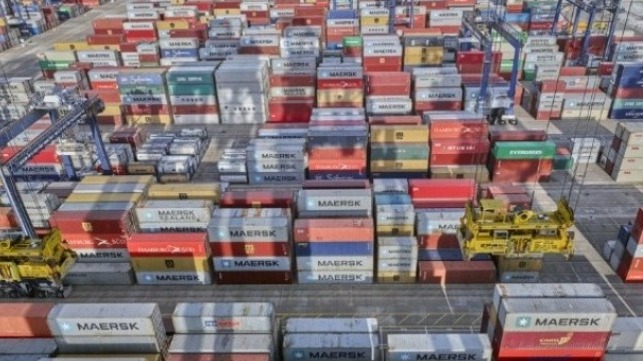Delays are Growing with Increasing Reports of Rollover Cargo Worldwide

For months, shippers, ports, and carriers have all highlighted the challenges they faced in response to the surge in container shipping volumes during the second half of 2020. Data analytics firm Ocean Insights released new data highlighting just how extensive the delays have been, which ports and carriers are experiencing under capacity, and a timeline of market volatility.
During December, Ocean Insights reports that on average 37 percent of containers overall were delayed in the major cargo regions of Europe, the US, and Asia as well as less cargo intensive regions such as Latin America. According to Ocean Insights, on average, more than one in three containers is being rolled over based on the percentage of cargo carried by each line globally that left a port on a different vessel than originally scheduled.
“Ocean Insights’ cargo delay statistics show how the bull run is wreaking havoc on the market,” the company said in reporting its data. The result is delays and unpredictability of shipments and cargo laying stranded in the ports creating further chokepoints and backlogs. “Much of the recent concern for rollover cargo has focused on reefer containers,” highlights Ocean Insights. One consequence they are highlighting is reports that some ports in China have run out of the power ports used to supply electricity to reefer containers, jeopardizing perishable cargo.
“Of the 20 global ports for which Ocean Insights collates data, 75 percent saw an increase in the levels of rollover cargo in December compared to the previous month,” said Ocean insights’ Chief Operations Officer Josh Brazil. “Major transshipment facilities such as Port Klang in Malaysia and Colombo in Sri Lanka recorded 50 percent or more of cargo delayed, with the world’s largest transshipment hub in Singapore and leading primary ports such as Shanghai and Busan rolling over more than a third of their containers, last month.”
While there has been extensive reporting about the shortage of containers and the efforts the shipping lines have been making to reposition the boxes, Ocean Insights highlights that it is only one of the consequences of the current conditions. “Today, even if a beneficial cargo owner can get an empty container for their cargo, there is no guarantee that the cargo will make it onto a ship,” the report highlights.
The performance, of course, varies widely by individual ports in part due to the number of actual containers moving through the port. However, the raised level of demand is creating new challenges even for ports that had been making progress. For example, they cite, the extra loader policy in South Korea’s Busan Port, which saw a four percent reduction in its rollover levels in November, only to lose most of those gains in December.

that matters most
Get the latest maritime news delivered to your inbox daily.
The major ocean shipping companies are also experiencing similar increases in rollover values with the average rising from 35 percent in November to 37 percent in December. However, according to Ocean Insights, three lines left more than half their booked cargo at the departure port. Alliance partners MSC and Maersk they report managed to stem the rise of the rollover cargo month on month, both recording the same level of rollovers in December as in the previous month, while HMM, which had been successful in limiting its rollover cargoes, saw its rate double in December as volumes surged.
With industry experts are now warning that the cargo surge could last well into 2021, Ocean Insights concludes that there is a strong likelihood that the prevailing conditions will continue throughout the first half of the year.
